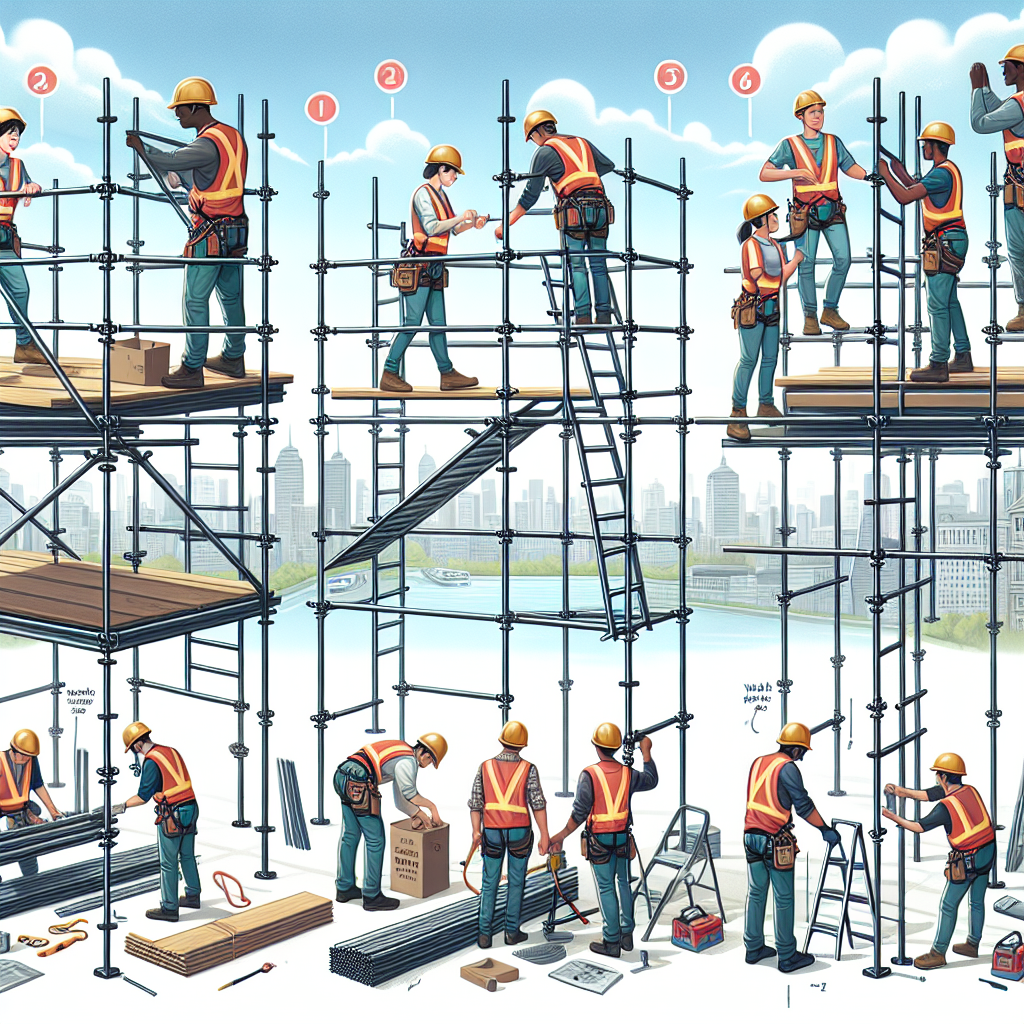
How to build scaffolding
Understanding Scaffolding: A Comprehensive Guide
Scaffolding plays a vital role in the construction industry by providing critical support during the building process. It acts as a temporary structure enabling workers to safely access elevated spaces, facilitating construction, renovation, and maintenance projects. The importance of how to build scaffolding cannot be understated, as a well-constructed system ensures safety and efficiency. In this guide, we will explore the process, materials, safety measures, and various types of scaffolding.
What is Scaffolding?
Scaffolding consists of a network of metal tubes or wooden planks that are temporarily erected around a building site. These frameworks serve as a platform for workers, allowing them to perform their tasks at different heights with ease.
The Purpose of Scaffolding
Here are some key purposes served by scaffolding:
- Provides a safe working platform at height
- Offers structural support for building materials
- Enables safe access to various parts of a building
- Facilitates the transportation of tools and equipment
Types of Scaffolding
Before diving into the details of how to build scaffolding, it is important to understand the various types available. The choice of scaffolding depends on the specific needs of the project. Here are the most common types:
- Tube and Coupler Scaffolding: This traditional method uses tubes and couplers to create various structures.
- Frame Scaffolding: This pre-fabricated framework is easy to set up and take down.
- System Scaffolding: Pre-engineered components that allow for a more flexible design.
- Suspended Scaffolding: Typically used for exterior work, these systems are suspended from the top of the building.
- Mobile Scaffolding: Easy to move, mobile scaffolding is useful for jobs that require the scaffold to be relocated frequently.
Materials Needed for Scaffolding
When constructing scaffolding, the right materials are essential for ensuring safety and stability. Here are the typical materials used:
- Steel tubes
- Aluminum scaffolding (for lighter and flexible use)
- Wooden planks (for platforms)
- Couplers and braces
- Casters (for mobile scaffolding)
- Safety guardrails and toeboards
Steps to Build Scaffolding
Building scaffolding requires a well-structured approach to ensure safety and compliance with regulations. Here’s a step-by-step guide:
Step 1: Planning and Preparation
Begin by planning your scaffolding design. Assess the job site and determine the height, weight load, and specific use of scaffolding. Draw a schematic if needed to visualize the structure.
Step 2: Selecting the Right Type of Scaffolding
Choose the appropriate type based on the tasks at hand. Review all relevant building codes and guidelines to comply with legal standards.
Step 3: Ground Preparation
Ensure that the ground is level and firm. If the ground is uneven, consider using leveling jacks or wooden pads to support the base of the scaffolding.
Step 4: Assembling the Base
Start by setting the base frames for your scaffold neatly on the prepared ground. Ensure they are placed on solid ground and secured if needed by weights or additional supports.
Step 5: Installing Vertical Standards
Install vertical standards (upright poles) at the corners and along the length of your scaffolding. Ensure they are vertical and anchored to avoid wobbling.
Step 6: Cross Bracing
Attach cross braces between vertical standards. This step is crucial as it adds stability to the scaffolding. Check that all connections are secure to ensure structural integrity.
Step 7: Adding Platform Boards
Once the base structure is secure, install platform boards. These should be placed on top of the scaffolding frames to create a stable working surface.
Step 8: Installing Guardrails and Toeboards
For safety, install guardrails at the edges of all platforms. Toeboards should also be installed to prevent tools and materials from slipping off the edge.
Step 9: Final Inspection
Before use, conduct a final inspection of the scaffolding. Ensure that all fittings are secure, and the structure is stable. Check the base for instances of sinking or instability.
Safety Precautions When Building Scaffolding
Prioritizing safety is paramount when constructing scaffolding. Here are key measures to follow:
- Wear appropriate personal protective equipment (PPE), including hard hats, gloves, and safety boots.
- Ensure scaffolding is inspected by a qualified person before first use and periodically afterward.
- Never exceed the load capacity of the scaffolding.
- Use scaffolding only for its intended purposes.
- Avoid using makeshift supports or materials not designed specifically for scaffolding.
Maintaining Scaffolding for Safety and Longevity
Regular maintenance of scaffolding is key to ensuring its long-term usability and safety. Apart from following the proper steps on how to build scaffolding, consider the following maintenance tips:
Routine Inspections
Schedule routine inspections to check for damages or wear. Pay attention to:
- Worn-out joints or couplers
- Corroded or bent tubes
- Loose planks with cracks
- Overall stability and security of the structure
Proper Storage
Properly store scaffolding when not in use. This includes:
- Keeping it indoors or under a shelter to prevent weather damage
- Cleaning dirt and debris that accumulate over time
- Arranging components in a way to avoid unnecessary wear
Repair Damaged Parts Promptly
Resolve any issues found during inspections to prevent accidents. Replace or repair damaged parts immediately. Don’t use defective scaffolding.
Conclusion
In conclusion, scaffolding serves a crucial purpose in the construction industry. Understanding how to build scaffolding and following safety precautions ensures a safer working environment for all involved. By choosing the right materials, utilizing structured steps, and maintaining the system, you can create a stable and safe platform for your construction project. Investing time in scaffolding safety and maintenance can lead to more efficient operations and ultimately, project success.
"Safety is not just a priority; it is a way of working in construction." – Anonymous
By adhering to these guidelines and practices, you can enhance the safety of your workplace and the efficiency of your team. With a solid understanding of scaffolding, you will be equipped to tackle any construction challenge that comes your way.
By Guest, Published on September 16th, 2024